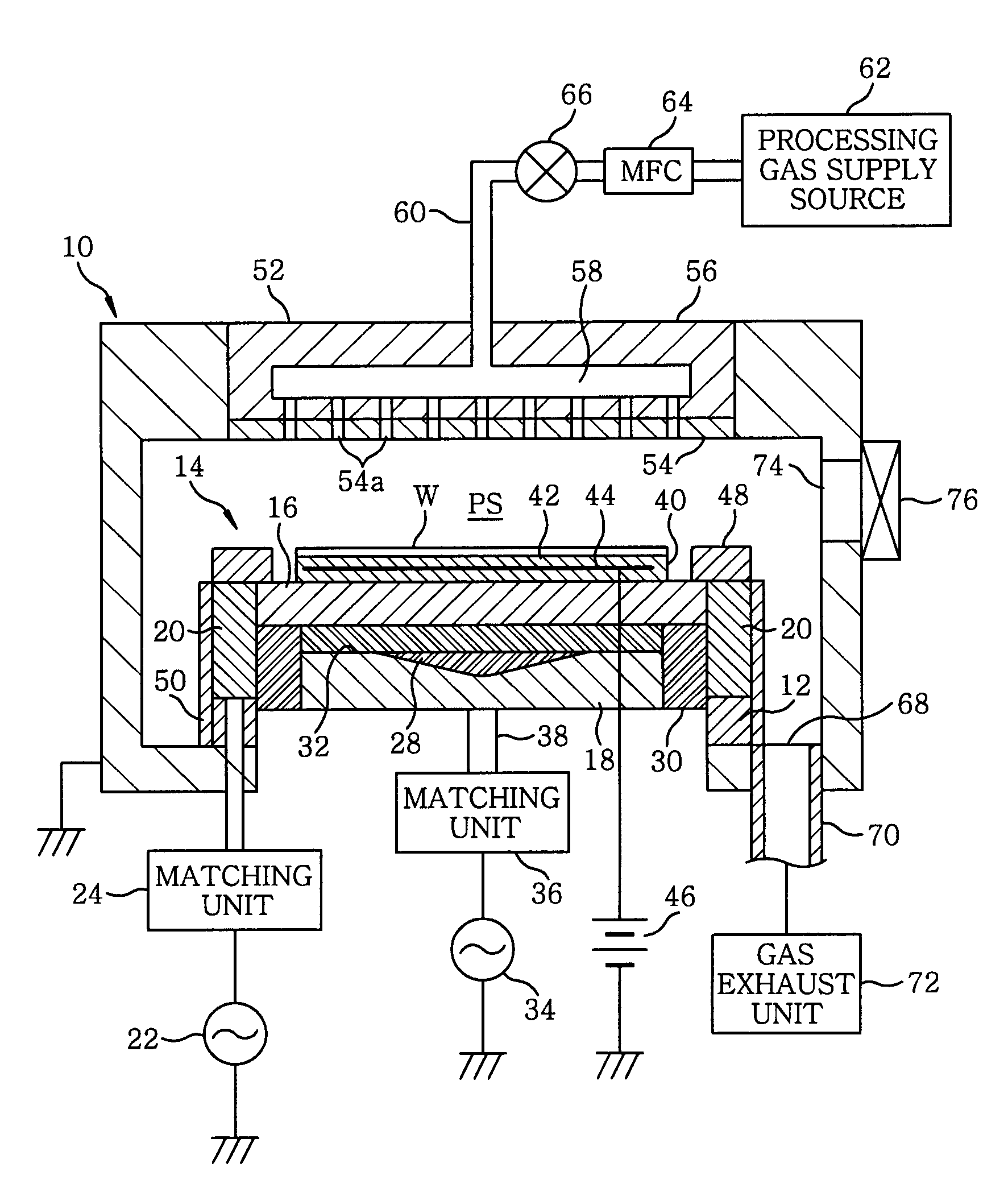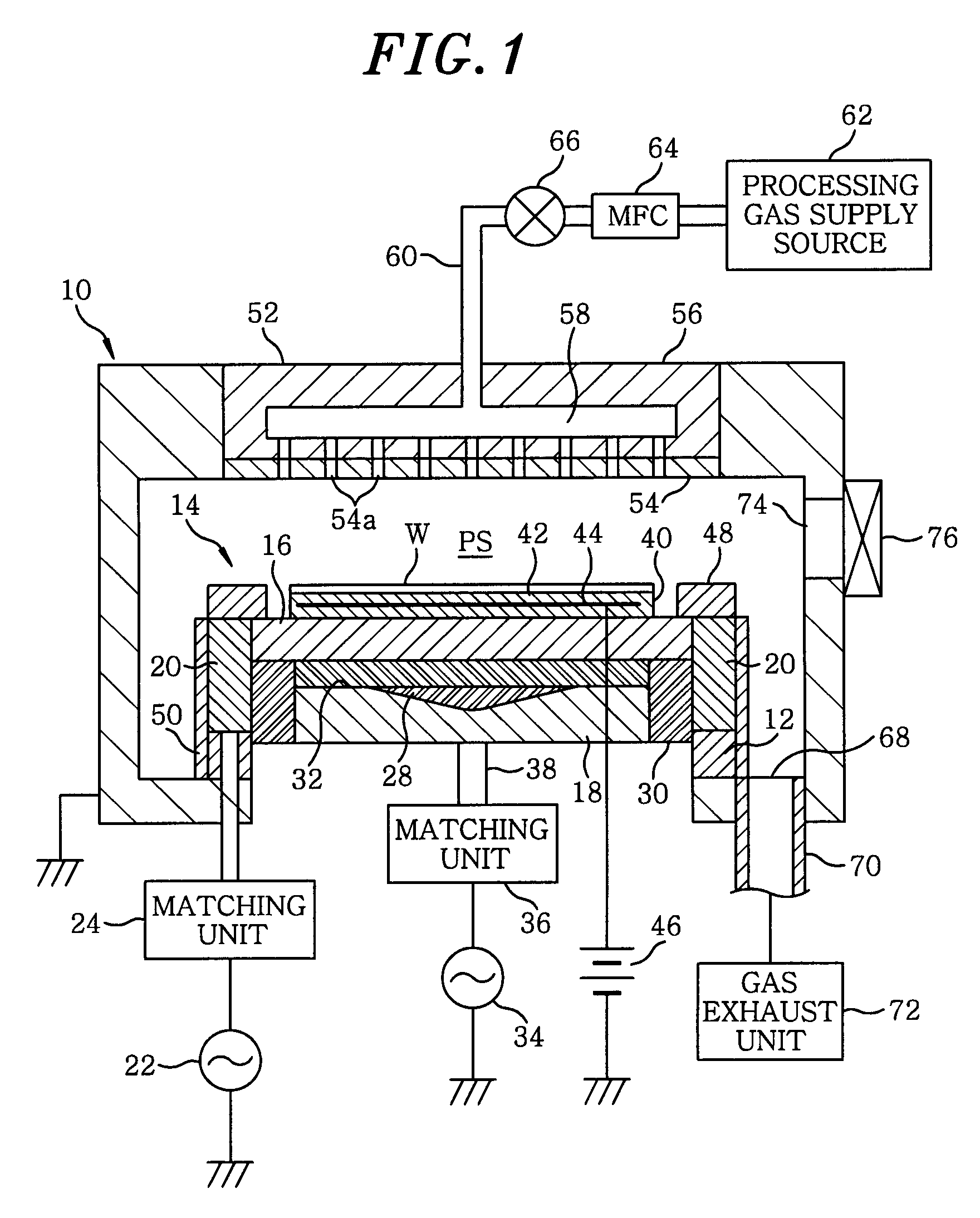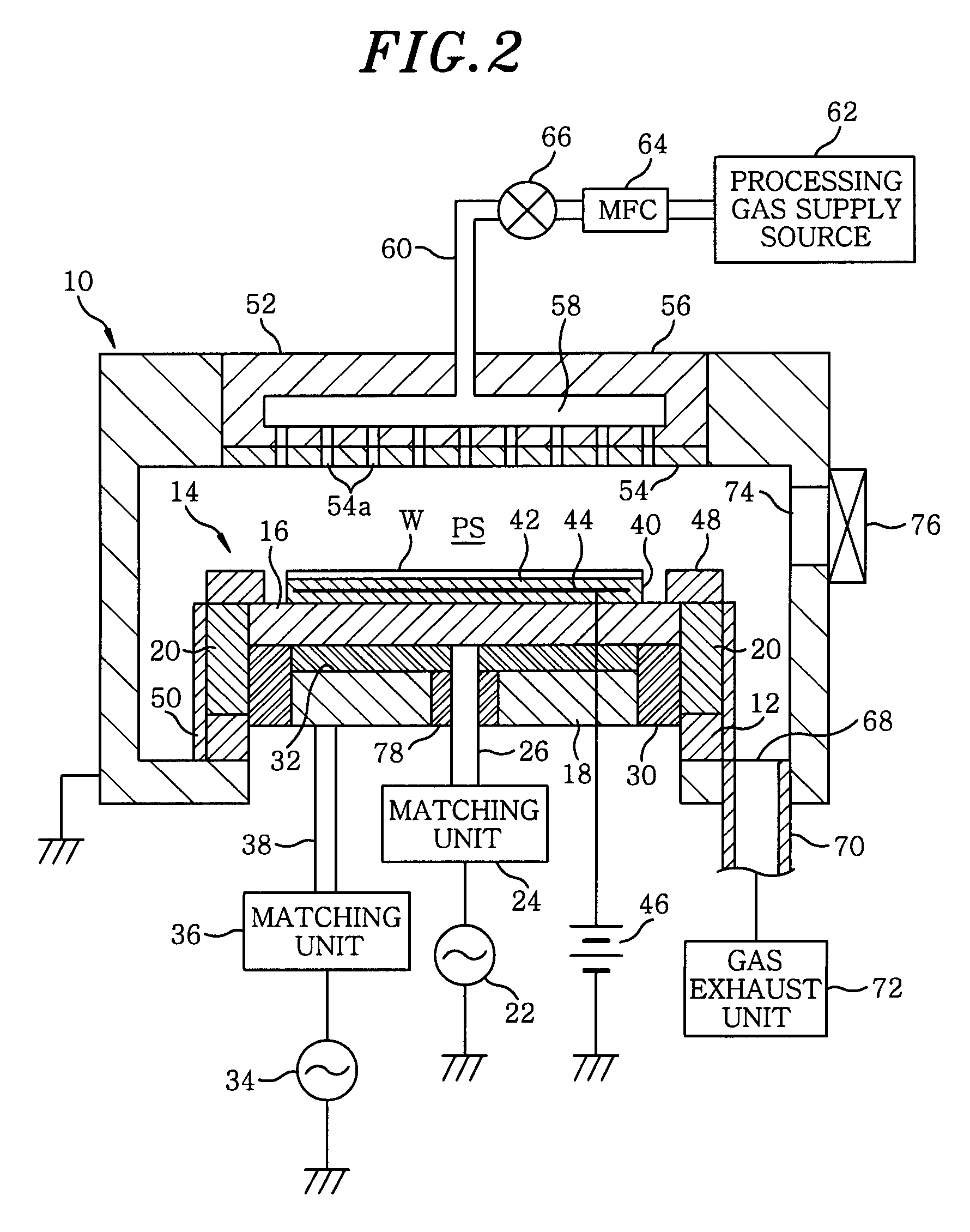Plasma processing apparatus
a processing apparatus and plasma technology, applied in the direction of coatings, chemical vapor deposition coatings, electric discharge tubes, etc., can solve the problems of increasing power consumption, deteriorating the uniformity of the electric field intensity distribution, and non-uniform process characteristics in a radial direction, so as to improve the efficiency and accuracy of plasma processing
- Summary
- Abstract
- Description
- Claims
- Application Information
AI Technical Summary
Benefits of technology
Problems solved by technology
Method used
Image
Examples
first embodiment
[0022]FIG. 1 illustrates a configuration of a plasma etching apparatus in accordance with the present invention. The plasma etching apparatus is configured as a capacitively coupled plasma processing apparatus of a type that applies dual frequency powers to a lower electrode. The plasma etching apparatus has a cylindrical chamber (processing chamber) 10 made of a metal such as aluminum or stainless steel, and the chamber 10 is frame grounded.
[0023]A susceptor 14 serving as a lower electrode and a substrate supporting table is disposed at a bottom portion in the chamber 10 via an annular insulating member 12 made of, e.g., ceramic. The susceptor 14 has an upper susceptor electrode 16 and a lower susceptor electrode 18 serving as a first and a second lower electrode, respectively.
[0024]On the annular insulating member 12, there is provided an annular or a cylindrical power feeder 20, and the upper susceptor electrode 16 is attached to the upper portion of the power feeder 20 substanti...
second embodiment
[0042]Moreover, the present invention can also be applied to a plasma processing apparatus of a type in which a high frequency power applied to an upper electrode side. For example, in the present invention shown in FIG. 3, the present invention is applied to an upper electrode 80 of a capacitively coupled plasma etching apparatus wherein powers of different high frequencies are respectively applied to the upper electrode 80 and a susceptor (lower electrode) 82. The upper electrode 80 includes a first upper electrode 84 disposed to face down the susceptor 82 with a plasma space PS present therebetween; and a second upper electrode 86 disposed at a rear side of the first upper electrode 84 when viewed from the plasma space PS or above the first upper electrode 84.
[0043]More specifically, the first upper electrode 84 has an electrode structure also serving as a shower head, and it is connected to a processing chamber 90 in a floating state, are electrically isolated from the chamber 9...
PUM
| Property | Measurement | Unit |
|---|---|---|
| frequency | aaaaa | aaaaa |
| frequency | aaaaa | aaaaa |
| frequency | aaaaa | aaaaa |
Abstract
Description
Claims
Application Information
 Login to view more
Login to view more - R&D Engineer
- R&D Manager
- IP Professional
- Industry Leading Data Capabilities
- Powerful AI technology
- Patent DNA Extraction
Browse by: Latest US Patents, China's latest patents, Technical Efficacy Thesaurus, Application Domain, Technology Topic.
© 2024 PatSnap. All rights reserved.Legal|Privacy policy|Modern Slavery Act Transparency Statement|Sitemap



